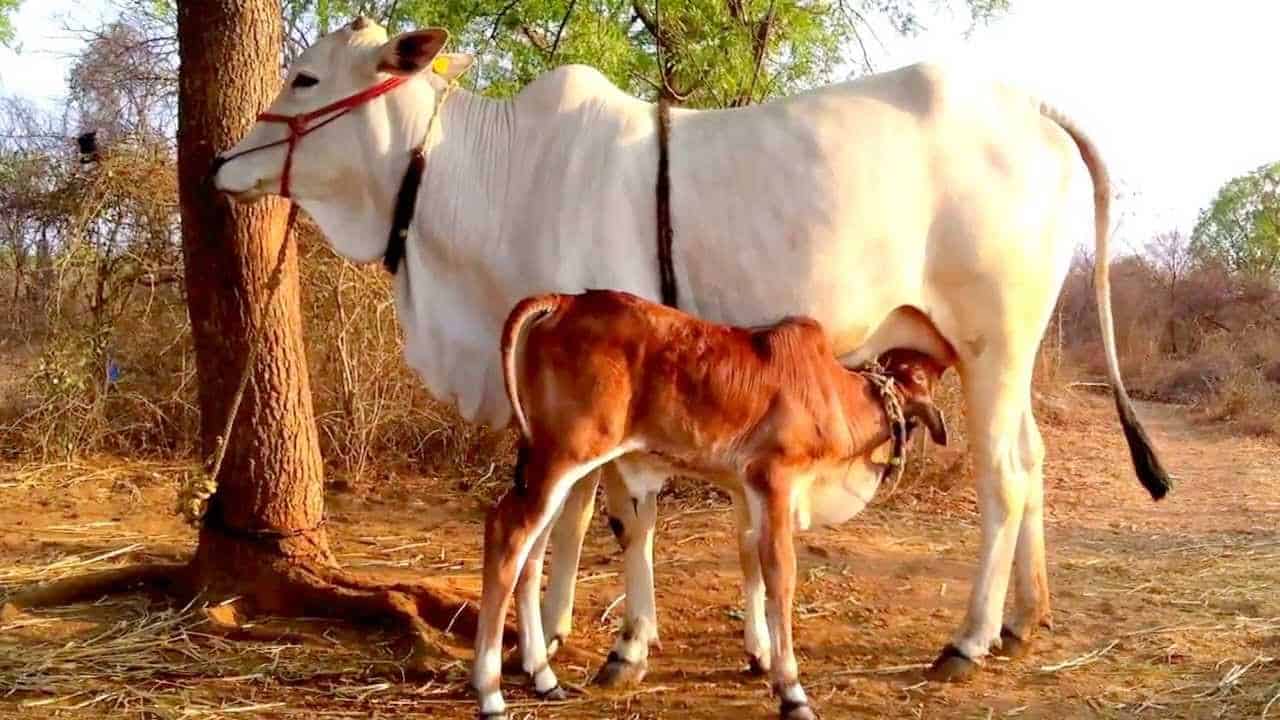
Voluntary Wait Period – Critical to Maintain Breeding Cycle
When to breed a cow after calving is a question many farmers wonder about, and there is no one correct answer. The period during which after calving the cow should not be bred, even if it comes in heat is called Voluntary Wait Period (VWP). This period is important as the cow uterus needs some rest after calving. The cow is reaching its peak milk yield under the influence of hormone and its rumen is getting adjusted to new high energy-density feed. Many cows would start chowing heat 15-21 days post-calving but research has shown that the first heat after calving is anovulatory (there is no follicle developing. In such a situation even if you breed, the cow will not get pregnant. On the contrary, if not done correctly there are chances of introducing infection. Secondly, the cow is yielding milk and pregnancy is antagonist to lactation (or the other way too). For deciding the VWP few important points must be considered. But the farmers or the vets must decide on a VWP for each category herd and try to stick to this period.
The factors to consider while deciding on this period are management, nutrition and physical environment. The type of calving and transition metabolic diseases are the most common factors that will push the first ovulation to an additional cycle. A cow that had difficult calving will be at least 21 days late than other herd mates for showing first ovulation. Many researchers have found that 20-30% cow may be anovulatory at 60 days in milk (that is beyond VWP). To decide on the WVP, the main issue to consider is how efficient is the heat detection in the herd. In farms where heat detection is not efficient, the farmer tends to insist on early insemination as he is not sure when the cow will be detected in heat next. If heat detection is less than 80%, the first attention should be given to this issue. If the cows are reared in loose open housing, heat detection is much easier than tied cows. Nowadays since data management services are available which will send alert messages to the farmers on due heat day, the farmers should subscribe to such systems (for example Herdman- www.vetware.co.in). Another alternate is use of the Internet of Things (IoT) devices like pedometer or tail paint method. Since most of the farms get into trouble because of low fertility, the farmer must pay attention to this aspect.
Recording first heat is important data even if the cow is not being bred as it indicates that the cow has started cycling and also taken as an index of the energy status of the cow. If a cow is reaching milk peak and also showing oestrus, it indicates positive energy status. Such cows, even if delayed in first insemination would respond to times AI protocol. Farms where the heat detection efficiency is good (above 80%), cows showing oestrus within 30 days after calving and overall conception rate is 50-60%, such farms should set VWP to 60-65 days. This will enable them to reap good 100-day milk average. The farmers and vets should remember that inseminating early does not mean the cow will get pregnant early, it might increase the number of inseminations per conception without altering calving to conception interval. In farms that are not well managed, have low heat detection efficiency and nutritional status is medium and many cows show delayed first heat, in such farms the VWP could be shortened to 50-60 days.
One more point to remember. In high yielding cows, one should be careful in curtailing the VWP as early pregnancy will require drying off the animal which is still giving high milk output. Any mistake in drying off of such cows will result in udder infections and heavy milk losses in the subsequent lactation. In short there are two options available to dairy farmers in India. In case your farm is having optimum conception rate, nutrition and heat detection with medium to high producing cows, fix up a VWP 60-70 days or opt for times-insemination protocol (such as Ovsync). For farmers that have heat detection issues, low nutrition and medium conception rates VWP of 40-50 days would suffice.
Farms that use natural service would usually have higher heat detection and conception rates hence they can afford to follow VWP of 100-110 days, so that they can reap more milk production from high yielding cows.
